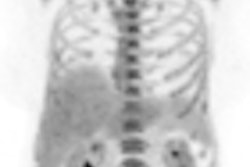VIENNA - Molecular imaging has become more reality than dream, but several obstacles remain before its potential in personalized medicine can be fully realized.
On the opening day of the European Congress of Radiology (ECR), Dr. Fabian Kiessling, chair of experimental molecular imaging at the University of Aachen in Germany, said many doctors "still think molecular imaging is something that is performed by some strange scientists working in the basement of their hospital, playing with mice, and there is some sort of nonapplicable radiology that is only good for chemists and biologists."
The fact is, Kiessling added, that almost all nontraumatic diseases start at the cell and tissue level, and the earliest signs of disease are alterations that occur at the DNA or molecular receptor level in the cells.
"There will be some tissue [remodeling] and these, in the end, will cause the symptoms that the patient feels," Kiessling said. "If you want to be early, fast, and sensitive, we need to image that. That's what molecular imaging is for."
Perception problem
One perception issue with molecular imaging is that as soon as the modality leaves the research setting, it is no longer considered molecular imaging per se. Kiessling gave the example of MR spectroscopy, which can assess different metabolic activity in tissue and how tissue changes under disease conditions, such as in prostate cancer.
"If you combine this molecular imaging tool with a morphological MRI, you can get higher sensitivity (95%) and higher specificity (91%) in prostate cancer detection," he said.
Kiessling also detailed the value of molecular ultrasound imaging for prostate and breast cancer, as well as soft-tissue and vascular diseases.
With molecular imaging's advance toward more individualized and increasingly specific patient therapies, new therapeutics are being developed to target receptors that ideally have fewer side effects and more directly detect the reason for a patient's disease. In addition, many promising radiotracers that enable the visualization of different metabolic, physiological, and molecular characteristics have been developed for PET and SPECT.
Limited benefits?
"Unfortunately, the more specific you become with a drug, the smaller the patient population that will benefit from it, because patients have different expressions of diseases," Kiessling added. "You have to preselect subpopulations of patients who will benefit from the treatment. These molecular therapeutics are highly expensive, so you don't want to waste money in treating patients that don't benefit."
He estimated development expenses in the range of 100 million to 600 million euros ($150 million to $900 million U.S.) for a new diagnostic product. Subsequently, pharmaceutical companies may prefer to focus on a few broad "blockbuster pharmaceuticals," which have broader patient applications with afflictions such as Alzheimer's and Parkinson's diseases.
Distribution issues
In addition, the short half-life for some PET radiopharmaceuticals means distribution strategies must be improved to reach a broader geographic market to bring their availability more cost-effectively to additional patients.
Even with its perception and economic issues, molecular imaging is "not just a dream, it is already a clinical reality," Kiessling said. "It is an important tool for the clinical translation of personalized medicine concepts."
While he expects more clinical and diagnostic molecular imaging tools to become available in the next few years, Kiessling said the use of molecular imaging to target small precancerous lesions, or even single diseased cells in the human body, "will remain a dream for now."



















